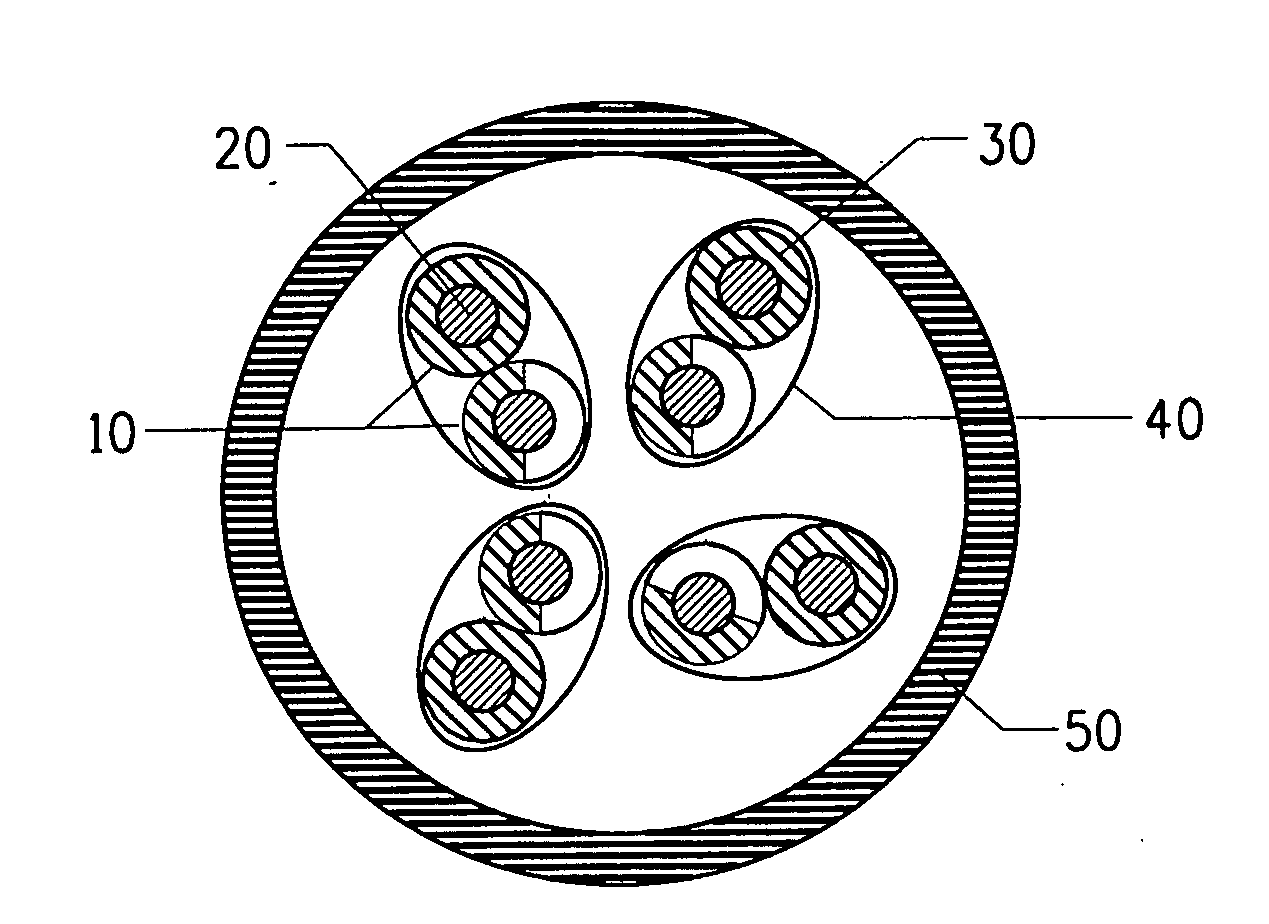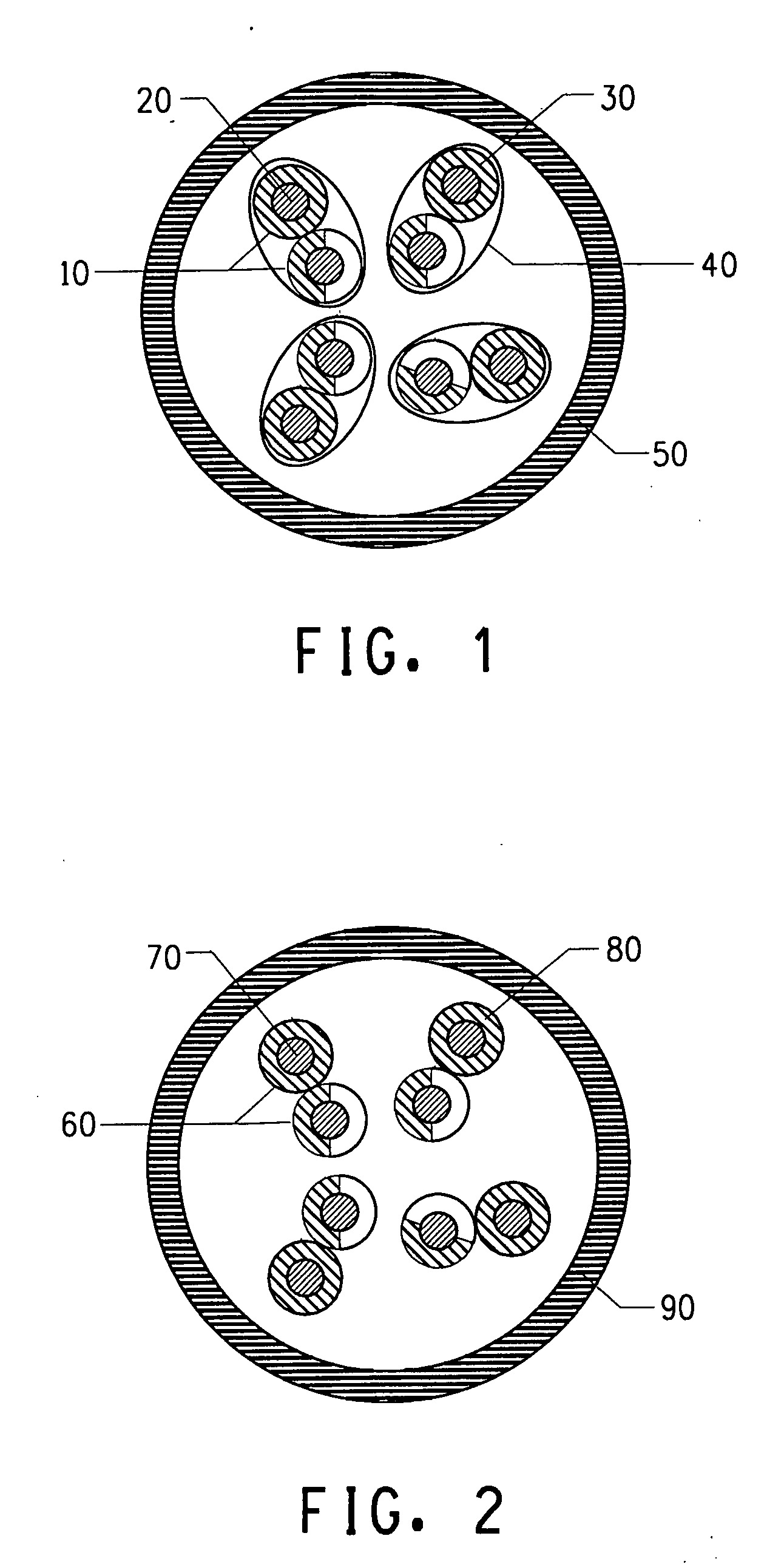Periodic Variation of Velocity of Propagation to Reduce Additive Distortion Along Cable Length
- Summary
- Abstract
- Description
- Claims
- Application Information
AI Technical Summary
Benefits of technology
Problems solved by technology
Method used
Image
Examples
example 1
[0081]The impedance of the cable is 100 Ω with a defect magnitude of an additional 1Ω. The total length of the cable is 100 m. The defects are spaced 0.3724 m apart (14.7 inches) which for a dielectric constant of 1.8 should yield a peak in the return loss at 300 MHz.
[0082]A twist (or back twist) applies non-uniform torque to a cable. The spacing of the defects is affected as a function of its location within the cable. The defects at the end of the cable are affected the most moving 1 cm while defects at the center are not affected at all. A linear distribution of the torque would only shift the return loss peak but not affect its height. A non-linear distribution of the torque “smears-out” the peak reducing its height. Table 1 shows modeling data of return loss improvement. In one case the applied periodic variation is triangular in shape. In another, it is sinusoidal in shape.
TABLE 1ReturnReturn LossDielectricTwistLossImpedanceImprovementConstant(cm)(dB)(Ohms)(dB)standard1.8011.9...
example 2
[0087]An example of the present invention is demonstrated by this example. The conditions of the Comparative Example are repeated for this example with the exception that the position of the water bath, used to cool the coated conductor after it exits the extruder, was varied during the coating run. A length of about 30 inches (75 cm)of the coated wire is immersed in the bath. The normal position for the bath is about 1 ft (30 cm) from the point at which the coated conductor exits the extruder coating die. The bath was moved from 6-18 inches (15-45 cm) from the exit point at a frequency of 12-14 sec per cycle. During the cycle approximately 150 ft (45 m) of insulated conductor passes through the bath. This was the wavelength of the variation and corresponds to a frequency of about 5 MHz. The effect was to change the rate of cooling of the coated conductor and thereby affect the rate and extent of shrinkage of the insulation. In this Example insulation diameter varied ±0.001 inch (25...
PUM
 Login to View More
Login to View More Abstract
Description
Claims
Application Information
 Login to View More
Login to View More - R&D
- Intellectual Property
- Life Sciences
- Materials
- Tech Scout
- Unparalleled Data Quality
- Higher Quality Content
- 60% Fewer Hallucinations
Browse by: Latest US Patents, China's latest patents, Technical Efficacy Thesaurus, Application Domain, Technology Topic, Popular Technical Reports.
© 2025 PatSnap. All rights reserved.Legal|Privacy policy|Modern Slavery Act Transparency Statement|Sitemap|About US| Contact US: help@patsnap.com



